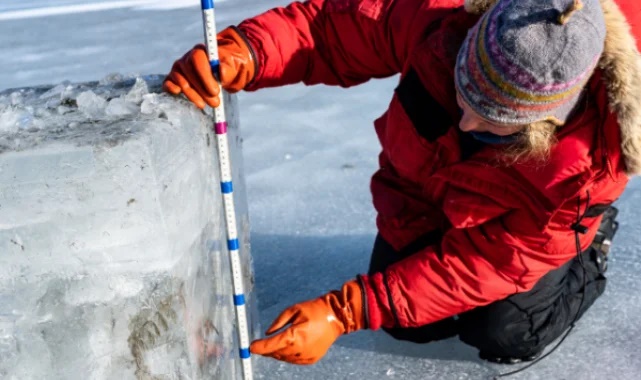Kategori : ELECTRICITY ENERGY NEWS, ENERGY AGENDA NEWS, ENERGY EFFICIENCY NEWS - Tarih : 15 August 2021
The smooth ice was like a clear window into the black abyss of the deep Siberian lake. Sergey Zimov, a Russian scientist studying Ice Age methane trapped in the Earth, turned again to the young American graduate student, motioning her forward. “I want to show you something important Katya,” he said.
Fueled by a rush of adrenaline, Katey Walter Anthony continued to shuffle slowly across the frozen surface until Sergey stopped. “Looking down through the ice was like looking up at the night sky – but instead of stars, clusters of bubbles streamed up,” recalls Katey. It was a moment that would change  everything for the Arctic researcher and future National Geographic Explorer.
everything for the Arctic researcher and future National Geographic Explorer.
Raised near California’s Sierra Nevada mountains, Katey was drawn to the quiet serenity of remote lakes. Friends were hardly surprised when, as a PhD student, she jumped at the opportunity to study in Siberia. She had suspected that ancient methane was randomly leaking from beneath Arctic lakes, but what Zimov showed her changed her understanding of how melting permafrost is affecting global climate change. Turns out it was not random at all. Permafrost, a thick frozen layer of ground found primarily in polar regions, contains twice as much carbon as the atmosphere. As ice melts from global warming, Arctic lakes form and become natural digesters that turn soil microbes into methane – a much more potent greenhouse gas than carbon dioxide. Understanding the implications of thawing permafrost and the impact of melting Arctic lakes leaking methane has become critical to understanding climate change.
The scope and perils of our global climate crisis are well documented. In 2020 alone, wildfires ravaged the Brazilian Amazon and the country of Australia, the most active Atlantic hurricane season in history was documented, disastrous flooding surged in China, and global temperatures soared while Arctic sea ice measurements shrank to alarming lows. Burning fossil fuels for energy may have started during the Industrial Revolution, but over half of all human-caused carbon emissions have been produced since 1988. The question is no longer whether the Arctic is melting, but rather how fast.
NASA has reported that while many models predict the Arctic Ocean will become ice-free for at least part of the year before 2100, other models predict that it will happen much quicker – within the next fifty years. Either way, the consequences would be devastating for natural ecosystems; most polar bears, for example, could become extinct from the wild by the end of this century.
While the Earth has always experienced natural cycles of warming and cooling, in evolutionary terms, Katey explains that “a four-degree increase in temperature would occur over 8,000 years; now that same temperature rise is happening in less than 100 years as a result of fossil fuel induced carbon emissions.” She goes on to recall, “Places I used to cross-country ski a decade ago are now swamps
and sinkholes. The Arctic is literally melting before our eyes.”





